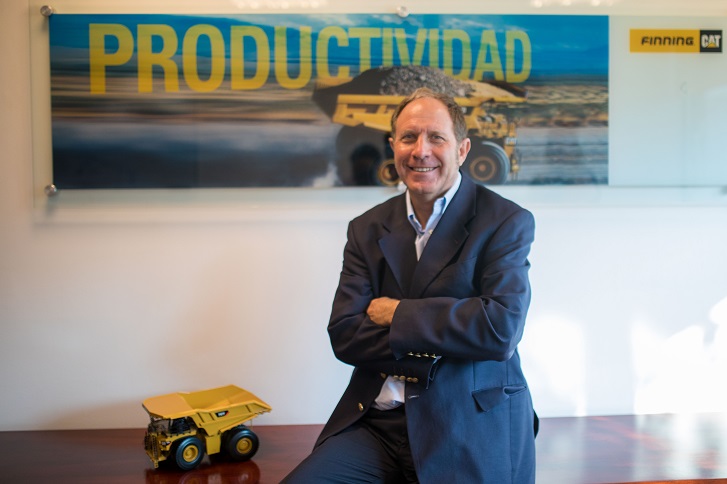Abril 2021,
How has Finning maintained supply chain continuity amid the pandemic?
We were able to take all possible measures to ensure the safety of our employees: over a thousand started working from home. We also applied special Covid-19 protocols to every job, adapted the workspaces, and created multiple campaigns to help with the mental health of our personnel and their families.
Additionally, we created the Operational Continuity Committee to manage and secure all the required equipment and spare parts in our inventory and in our customers’ inventory to continue supplying them.
How does Finning's distribution agreement with Resemin better position the company in the Chilean underground market?
We offer a comprehensive portfolio in the open-pit space, but there was a shortage of product line in relation to underground. Our representation of Resemin gives us a substantial position with the jumbo and other relevant lines. We also have to consider that Finning has the representation of Elphinstone for Special Underground Auxiliary Equipment. Today, Finning has, under the umbrella of one company, the largest portfolio and the most comprehensive lines of equipment for underground mines. We are receiving positive feedback from our customers, showing that Resemin is a great addition to what we offer.
Can you give an overview of the technology the company offers in autonomous mining?
We developed a robust strategy that starts with a new specialized organization that includes qualified managers, engineers and a complete organization platform in autonomous projects to support the customers from the conceptual idea up to the implementation, all in close connection with CAT and with our organization in Finning Canada. As part of our training for autonomous operators, we invested in a Simulation School located in our facilities in Antofagasta, and being replicated in Santiago to prepare for upcoming projects.
By mid 2021 we will work with Teck Resources' Quebrada Blanca Phase 2 (QB2) project on the Autonomous Mode. This is our first open pit project of this kind. It will operate with the Diesel Electric Truck CAT 794 AC. In underground, we are working with Codelco’s El Teniente in the second phase of the semi-autonomous project with great success, and we see interest in extending this plan for the mine.
We are witnessing strong commitment and demand from customers to move to autonomy. Caterpillars' autonomous system is the best option for customers, as it allows for a 30% increase in productivity and has many advantages compared to other brands in the market, as it can run both on the CAT fleets but also on different equipment from other brands, as well as in a mixed mode.
What products and services does Finning offer that emphasize sustainability?
By 2040, the mining industry is aiming for the elimination of gas emissions. Many mining companies are already switching to renewable energies to reach this goal. In collaboration with Caterpillar, Finning is also heading in a more sustainable direction.
We also believe in building capacity for the future. That’s why we partner with communities to empower learning and training the future generation in science, technology, engineering, and math. We are also committed to decrease the gender gap in the mining industry by providing free training and scholarships to women.
What are the barriers to mining innovation in Chile?
There are no significant barriers to innovation, and the mining industry has made tremendous innovations over the last years. Approximately 95% of the demand for renewable energy in Chile came from the mining industry. The desalinations plants are supporting the increasing investment in technology development within the industry. The mining industry is also the first to initiate operation management centers from one location, which increases operational efficiency and labour flexibility.
The Covid-19 pandemic encouraged digitization in the mining industry regarding supervision and maintenance. Maintenance on sites is now conducted through drone surveying which improves productivity, reduces risks, and is less expensive.
Source: Global Business Reports

